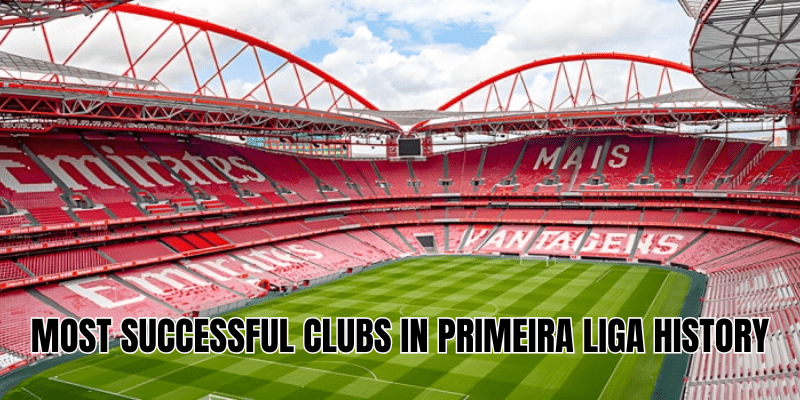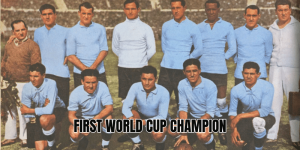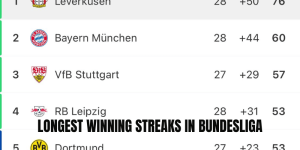Rivalries that echo across centuries — the most successful clubs in Primeira Liga history are not just about silverware, but about identity, bragging rights, and generational glory. In this article, AnnuGoal will take you through the legacy of Portugal’s top clubs, their title counts, the shifts in dominance, and how the landscape could evolve in coming years.
Why dominance matters in Portuguese football
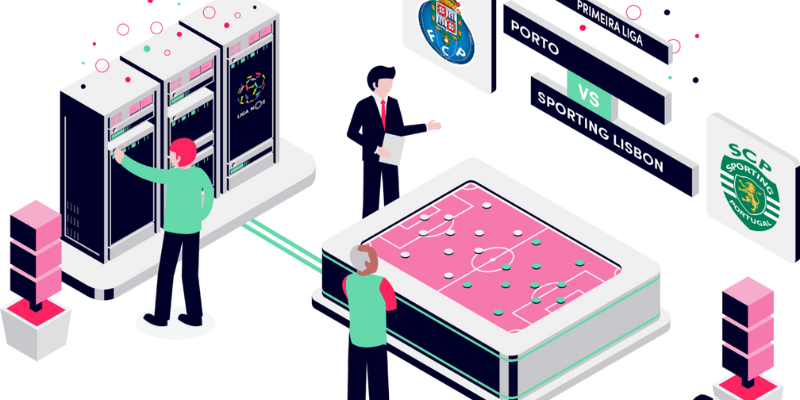
Portugal’s top-flight, the Primeira Liga, has long been shaped by the imbalance of power. Since its founding in 1934–35, only five clubs have ever lifted the league trophy — a testament to how fierce the competition is at the top.
When we talk about the most successful clubs in Primeira Liga history, we refer to those with sustained success, not just one-off glories. We look at:
- Total league titles
- Periods of dominance
- Rivalry and cultural influence
- Recent momentum and future prospects
With those metrics in mind, let’s dive into Portugal’s powerhouses.
The “Big Three” — Benfica, Porto, Sporting

Three clubs dominate every discussion of Portuguese football: SL Benfica, FC Porto, and Sporting CP. They aren’t just the biggest by fanbase or revenue — they hold nearly every Primeira Liga trophy ever awarded.
SL Benfica: King of titles
Benfica sit at the summit. They boast 38 Primeira Liga titles, then Portuguese football history. Their dominance spans eras — from the golden 1960s under coach Béla Guttmann to the more recent runs under Jorge Jesus and Rui Vitória.
Some notable facts:
- Benfica’s trophy haul also includes multiple domestic cups and they remain the only Portuguese team to win back-to-back European Cups (though that’s separate from league dominance).
- Their periods of sustained dominance — especially in the 1960s/70s and early 2010s — helped build the brand and identity of the club as a perennial power.
FC Porto: Champions of consistency and resurgence
Porto rank second in the hierarchy with 30 Primeira Liga titles.
While Benfica may have more titles overall, Porto have shown remarkable consistency especially. Under managers like José Mourinho, José António Camacho, and Sérgio Conceição, Porto have often emerged as the counterweight to Lisboa’s dominance.
Key features of Porto’s success:
- International success: Porto have also won multiple European trophies, which bolsters their prestige beyond just domestic league titles.
- Strategic shifts: Porto often adapt better to changing football economics, scouting, and transfer markets, leveraging their strengths to challenge Benfica’s grip.
Sporting CP: Rising, falling, and rising again
Sporting CP is third among the greats, with 21 Primeira Liga titles. Though for decades Sporting was a “also-ran” behind Benfica and Porto, in recent seasons their resurgence is hard to ignore.
Modern highlights:
- Sporting captured back-to-back titles in 2023–24 and 2024–25, bringing momentum to their side of Lisbon. My Football Facts])
- Their youth academy has long been a selling point — producing stars like Cristiano Ronaldo, Luís Figo, and Bruno Fernandes.
- Sporting’s resurgence challenges the duopoly of Benfica–Porto, and adds drama to title races.
Beyond the Big Three: the rare champions
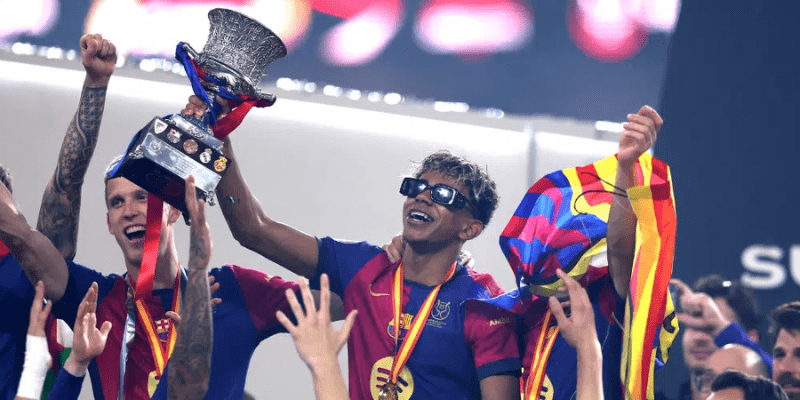
It’s critical to remember: only five clubs ever won the Primeira Liga. That shows just how steep the barrier is to entry.
Boavista and Os Belenenses: the unlikely victors
- Boavista FC claimed the title once, in the 2000–01 season. They broke the Big Three monopoly in a dramatic campaign.
- CF Os Belenenses also have one championship, won in 1945–46. That remains an enduring piece of Portuguese football folklore.
These two clubs remind us that surprise champions can emerge — though very rarely — when conditions align (injuries, crisis among big clubs, strong underdog spirit).
Era by era: shifts in supremacy
To understand dominance, it helps to track how the balance has shifted over decades.
1930s–1950s: The early struggle
In the early decades, the league was less consolidated. Sporting and Benfica fought early battles, and Belenenses’ 1945–46 title stands out. Porto was also present but not yet consistently dominant.
1960s–1970s: Benfica’s golden era
Benfica surged ahead in this period. With strong finances, management, and layers of talent, they racked up numerous titles and built a cultural image of the club of the people.
1980s–1990s: Porto’s rise, Sporting’s drought
Porto started to challenge seriously, especially in the late 1980s. Sporting fell into long droughts, and Benfica still remained strong — but Porto was becoming a power to be reckoned with.
2000s onward: Balanced rivalry and volatility
In the 21st century, the title race more frequently involves Porto and Benfica battling closely. Sporting’s resurgence adds complexity. Financial challenges, managerial turnover, and European demands have made consistency harder — except for the top few.
Notably:
- Porto and Benfica often alternate periods of dominance.
- Sporting’s recent double titles make them a contender again.
- Unexpected champions are nearly extinct in the modern era.
Benchmarks and statistical records
Let’s zero in on key statistics that underscore why these clubs stand above the rest.
Title counts
- Benfica: 38 titles
- Porto: 30 titles
- Sporting: 21 titles
- Boavista: 1 title
- Os Belenenses: 1 title
Championship monopoly
Of all Primeira Liga titles awarded, the Big Three have claimed all but two. That’s a staggering statistic: nearly a 98% share of league trophies.
Recent performance
- Sporting now hold back-to-back titles (2023–24 and 2024–25), signaling strong form.
- Benfica and Porto are still constantly in the mix, but today each slip-up is amplified in title races.
Why the Big Three dominate (and how that may change)
The reasons behind the enduring dominance of Benfica, Porto, and Sporting go beyond just winning matches.
Financial and institutional strength
These clubs have bigger revenue streams, better sponsorships, and more global appeal. They can compete for better talent, maintain infrastructure, and survive financial shocks better than smaller rivals.
Talent development and scouting
All three have robust youth systems. Sporting’s academy is famed globally. Benfica and Porto consistently invest in scouting, both domestically and from Portuguese-speaking countries (e.g., in Brazil, Africa).
Brand, fanbase, and social power
These clubs command huge support across Portugal and abroad. Their influence in media, politics, and culture gives them soft power. The kind of match that sells stadiums, sponsorships, and broadcast rights usually features one (or more) of the Big Three.
European performance and prestige
Success in European competitions elevates club reputation and revenue. Porto and Benfica have won European trophies; Sporting less so, but their domestic revival helps. International visibility attracts better players and investment.
Potential challengers and what it would take
For another club to break in, several factors must align:
- Resource injection: A significant external investment or benefactor.
- Smart leadership: Strong sporting direction, stable management, good recruitment.
- Momentum and opportunity: Big clubs in crisis, tactical revolutions, or a talent breakout.
- Sustained consistency: One title isn’t enough — the club must threaten every season.
One club to watch is SC Braga — while they haven’t won the league, their growing consistency and occasional European success suggest they aspire to more. That said, the most successful clubs in Primeira Liga history will likely remain the Big Three unless an extraordinary disruptor emerges.
The narrative behind each rivalry
Part of what makes Benfica–Porto–Sporting so compelling is their intense rivalries and narratives.
- The “O Clássico” between Benfica and Porto is the fiercest showdown in Portuguese football. It’s about more than points — it’s about pride, identity, and asserting dominance.
- Matches between Sporting and Benfica (Lisbon derbies) or Sporting and Porto also carry city-to-city pride, generational loyalties, and bragging rights.
- Fans measure success not just in trophies, but in seasons where a title competes or a rival is embarrassed.
These rivalries fuel passion, media coverage, and club strategies — reinforcing collective memory and ensuring that future generations stay invested.
Challenges ahead in the next decade
While the Big Three look secure, several challenges could reshape the landscape.
- Financial Fair Play and regulation: Tighter controls might reduce disparities.
- Globalization & player movement: Top Portuguese talent often depart early; if mid-tier teams master scouting and retention, the balance could shift.
- Investment in infrastructure: Clubs outside the big three would need to modernize stadiums, youth systems, and marketing if they want to compete.
- European performance: If Benfica or Porto underperform in Europe, revenue gaps widen. Conversely, a challenger breaking through in Europe (e.g., Braga, Vitoria) could shake perceptions.
- Leadership continuity: Frequent managerial turnover among top teams could open doors for more stable “underdogs” to establish themselves.
In short: the most successful clubs in Primeira Liga history are well entrenched, but football’s nature is change. Opportunity always lingers.
Final Thoughts
In this article, the most successful clubs in Primeira Liga history have emerged clear: Benfica, Porto, and Sporting stand head and shoulders above the rest. Their dominance is not just a matter of trophy counts, but of tradition, infrastructure, fan loyalty, and institutional strength.
If you’re a fan of Portuguese football — or a newcomer wanting to see who holds power in one of Europe’s most intriguing leagues — these are the names you need to know.
Stay tuned with AnnuGoal for deeper dives — club profiles, player spotlights, match previews, and transfer rumors all centered around Portugal’s biggest stories. Kick off the next chapter of Portuguese football with us!
